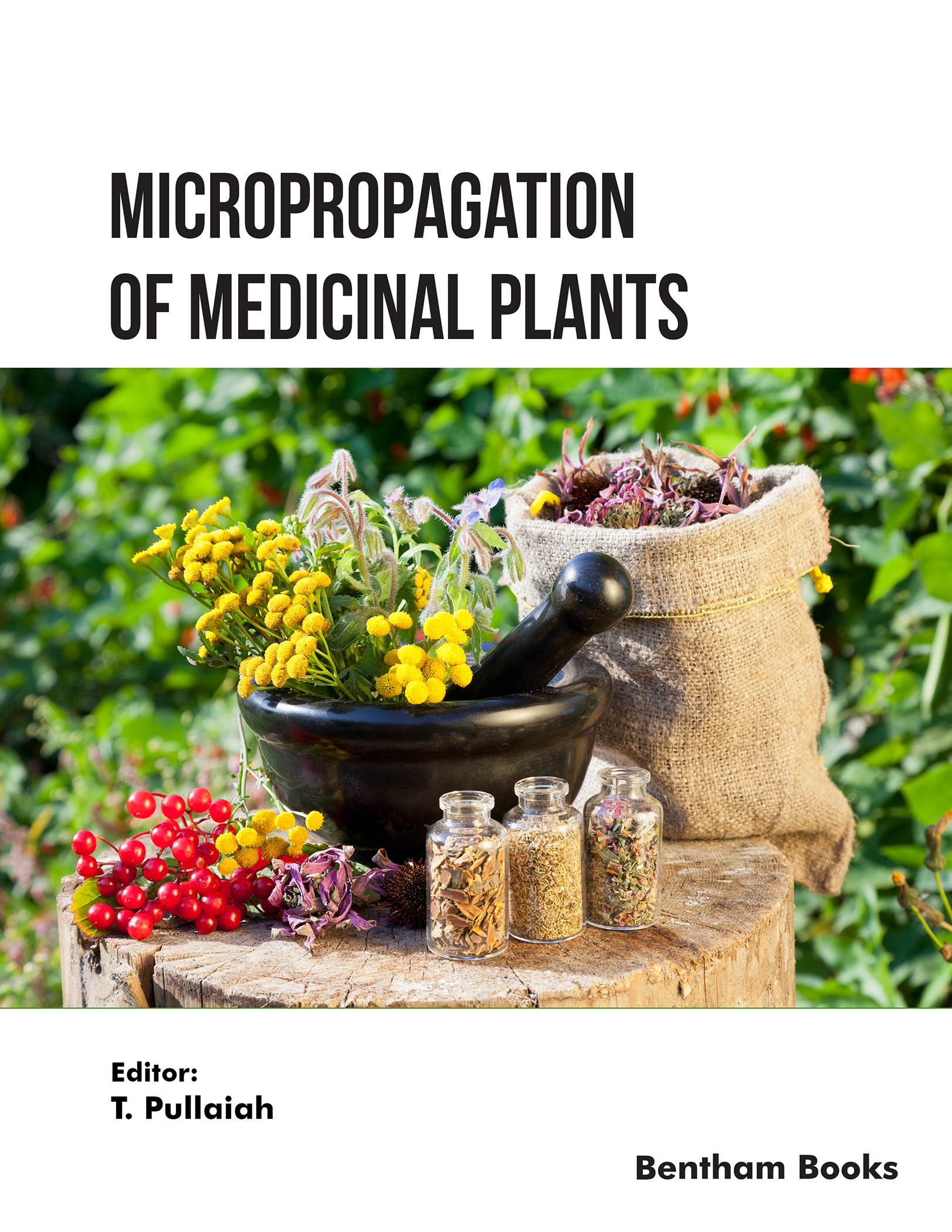Micropropagation of Ginger (Zingiber officinale Roscoe)

- Authors: Nayan Kumar Sishu1, Parasurama Deepa Sankar2, Chinnadurai Immanuel Selvaraj3
-
View Affiliations Hide AffiliationsAffiliations: 1 School of Biosciences and Technology, Vellore Institute of Technology, Vellore, Tamil Nadu, PIN 632 014, India 2 Department of Genetics and Plant Breeding, School of Agricultural Innovations and Advanced Learning, Vellore Institute of Technology, Vellore, Tamil Nadu, PIN 632 014, India 3 Department of Genetics and Plant Breeding, School of Agricultural Innovations and Advanced Learning, Vellore Institute of Technology, Vellore, Tamil Nadu, PIN 632 014, India
- Source: Micropropagation of Medicinal Plants , pp 63-76
- Publication Date: March 2024
- Language: English
Micropropagation of Ginger (Zingiber officinale Roscoe), Page 1 of 1
< Previous page | Next page > /docserver/preview/fulltext/9789815238303/chapter-4-1.gif
Zingiber officinale, belonging to the family of Zingiberaceae, is commonly known as ginger and is commercially grown as a spice and for culinary purposes. It is a potential Ayurvedic herb with many medicinal properties. A small section of the plant's rhizome is widely used for micropropagation. Besides rhizome explants, callus induction, shoot induction, and meristem culture are used to propagate the plant. For the production of ginger's pest-resistant and disease-free planting material, micropropagation is regarded as the best method. Various classes of bioactive entities, such as flavonoids, alkaloids, glycosides, phenols, tannins, terpenoids, steroids, saponins, and oils, have been identified in the plant. Phenolic bioactives such as gingerols and shogaols are primarily responsible for their therapeutic properties. Various pharmacological activities have been investigated in ginger. This review concentrates on different advanced methods for ginger propagation, especially micropropagation.
-
From This Site
/content/books/9789815238303.chapter-4dcterms_subject,pub_keyword-contentType:Journal105

